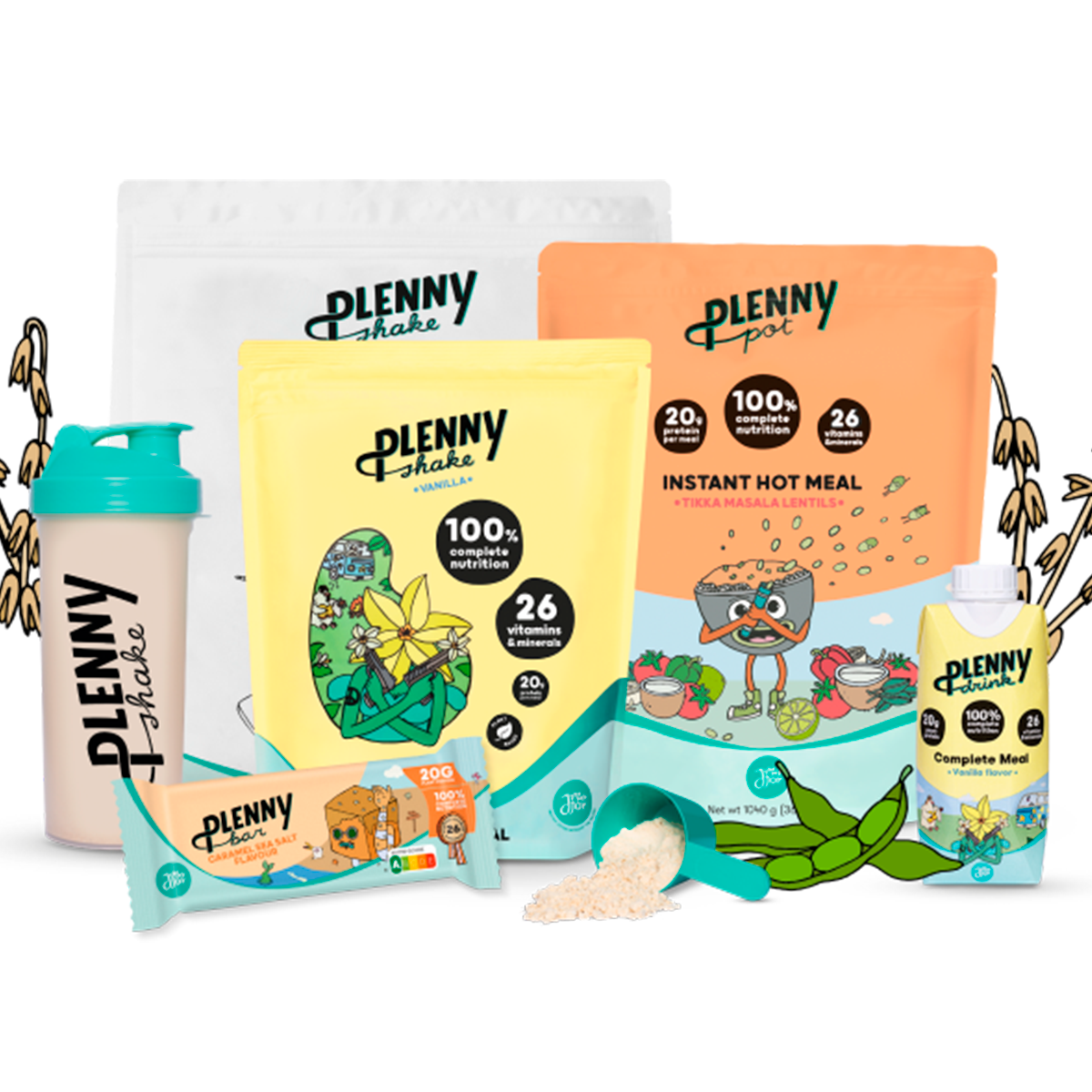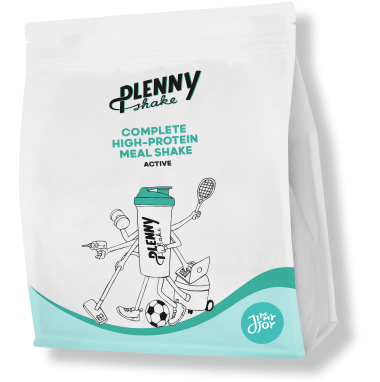The Ins and Outs of Climate Change (Part 1 of 2)
Part I: Let's talk about climate change
It seems to be what everyone has been talking about lately, and for good reason. David Attenborough's documentary "A Life on Our Planet" showed us once again how beautiful our blue and green marble is, but also that it has been getting worse over the past decades. For David's sake, we must protect it at all costs! Still, opinions vary, discussions get heated. So if you're interested in knowing what the hype is all about or just want to refresh your memory on why and how the world is coming to an end (JK, we hope), you're in the right place. The floor is yours, climate change!

What is climate change?
Climate change, speaking more tangibly, refers to the increase in global temperature, rainfall and rising sea levels. These phenomena, in effect, significantly impact several areas that are essential to human existence: health, agriculture, forests, water resources, coastal areas, biodiversity, to name just a few. Environmental pollution, for example, causes 4.8 million deaths worldwide and costs 1.1 trillion dollars annually (5).
What causes climate change?
In 1824, a French mathematician and physicist named Joseph Fourier first suggested that without our atmosphere, the Earth would be a very cold place. This is also the time when 'the greenhouse effect' was first discovered, referring to gases in the Earth's atmosphere that act like glass in a greenhouse would: they contain the sun's heat and prevent it from leaking back out into space (2).
Many of these atmospheric gases occur naturally, but by burning fossil fuels, clearing rainforests, and raising livestock, human activity is increasing the concentrations of some of these gases, in particular:
- carbon dioxide (CO2)
- methane
- nitrous oxide
- fluorinated gases
CO2 is the greenhouse gas produced most by humans and is responsible for approximately 64% of all humanity's contribution to global warming (14). Its concentration in the atmosphere is currently 40% higher than when industrialization began in the early 19th century.
Other greenhouse gases are emitted in smaller quantities, but when it comes to keeping the heat at bay, they are in some cases thousands of times stronger than CO2. By the way, methane is responsible for 17% of man-made global warming, nitrous oxide for 6%.
According to Climate Action, a department of the European Union's executive branch that is responsible for EU policy on, you guessed it, climate action, these are the main causes of rising emissions:
- Burning coal, oil and gas produces carbon dioxide and nitrous oxide.
- Clearing forests (deforestation). Trees help regulate the climate by absorbing CO2 from the atmosphere. So when they are cut down, that beneficial effect is lost and the carbon stored in the trees is released into the atmosphere, increasing the greenhouse effect.
- Increased livestock farming. Cows and sheep produce large amounts of methane when they digest their food. (Methane is responsible for 17% of man-made global warming.)
- Nitrogen-containing fertilizers produce nitrous oxide emissions (nitrous oxide is responsible for about 6% of man-made global warming).
- Fluorinated gases produce a very strong warming effect, up to 23,000 times greater than CO2. Fortunately, these are released in smaller quantities and are being phased out by EU regulation. (14)
Climate change masterminds have already made predictions about the future effects of climate change if emissions continue at the current rate. Fittingly, these predictions became known as “Doomsday Scenarios.” The term refers to possible predictions of events that could lead to human extinction and/or the destruction of all or most of life on Earth. Sounds fun, doesn’t it? Since we are based in the Netherlands, here is an example of a doomsday scenario called “The Nation Formerly Known as the Netherlands” (8). It raises the question of the Netherlands disappearing below sea level brought on by warming of the atmosphere and ocean, leading to decreased amounts of snow and ice and rising sea levels. The scenario concludes that if we continue to burn fossil fuels indefinitely, global warming will eventually melt all the ice at the poles and on the mountain tops, raising sea levels by 18 meters (9). If this is the case, we will create an ice-free planet with an average temperature of 26 degrees Celsius instead of the current 14 degrees. In this scenario, Jimmy Joy's headquarters would be underwater.

So how much time do we have?
The average global temperature is currently 0.85ºC higher than it was at the end of the 19th century, and each of the past three decades has been warmer than the previous decade. The world's leading scientists agree that human activities almost certainly play the largest role in this rise in temperatures.
We don’t want to scare you, but according to the latest studies, we only have about 7 years, 39 days and 3 hours* until the damage is irreparable. If emissions continue at the rate they are going, that’s when we will have burned through our “carbon budget” – the amount of CO2 the atmosphere can absorb without global temperatures rising to 1.5°C above pre-industrial levels. Scientists consider a 2°C rise compared to pre-industrial temperatures to be a point of no return, after which the risk of possibly catastrophic changes to the global environment will have increased dramatically. That’s why it’s widely recognised that it’s vital to keep warming below 2°C.
* This article was written on November 23, 2020 at 10 am
You can follow the climate change clock live here. The climate countdown clock was installed in 150 cities around the world (including New York, Oslo and Berlin) to remind people of the world's most important deadline.
Slowing the effects of the global crisis and ultimately changing its course depends on collective action by every country and every individual. Every effort matters! To achieve the Paris Agreement goal of net-zero emissions by 2050, there is still much to be done, but fortunately there are ways to flatten the curve.
What are WE doing?
Look, let's be honest: an underwater headquarters sounds cool, and we're already talking to recruiting agencies in Atlantis. But when push comes to shove, we'd rather not remodel our entire business to get an underwater office up and running. Sorry, Aquaman. So here's what we're doing to help flatten the curve and hopefully keep the ocean from reaching our doorsteps:
Carbon Footprint → In the past few months we have made some transitions to more local suppliers. That is, with regard to all ingredients for which it is feasible to source locally. For example, as one of our main ingredients, our oats come from Sweden, which is known for the highest quality oats and which saves us the long transport distances for the ingredient. But because quality is so important to us, for example, mango cannot be grown sustainably in Europe all year round, so we still get the mango flavour from Brazil. Even though that is the case, we are proud to say that we offset all our carbon emissions by planting trees together with Trees4All. The shipping carriers we use already offset their own carbon emissions, and we do this on top of that. So all our transport emissions are doubly offset!
Deterioration of ecological systems and loss of biodiversity → All our products are 100% vegan and for our latest Plenny Shake Active formula we added Ahiflower . We already had plant-based omega before the flower, but what makes the flower more special is that it contains SDA, which is better absorbed by the body than ALA (which most plant-based oils have). Also, did you know that around 25 million tons of wild fish are harvested and processed into oil every year? If, like us, other companies used this natural plant-based source of omega 3, 6 and 9 instead of fish, that would also reduce the pressure on wild marine populations in the oceans and help restore ocean abundance!

Community → In 2019, we decided to use Black Friday as an opportunity to do something good for the planet. For every order placed during Black Friday/Cyber Monday, we planted a tree. With your help, we managed to plant 1522 trees! That's a small Jimmy Joy forest.
However, in 2020 we are supporting a more local cause. In addition to offering a discount on our products, we are donating 5 meals for every order we receive to the local food bank! For a whole week! Plus, we are also supporting the Red Cross.
Food Waste → Research shows that about 10 percent of energy use in the U.S. goes toward growing, processing, packaging, and shipping food—40 percent of which is wasted and tends to end up in a landfill. Since livestock products are among the most resource-intensive to produce, eating meatless meals can also make a big difference. This is where Jimmy Joy comes in: our nutritionally complete meals have a 12-month shelf life and are meat-free. No more food waste!
Plastic Usage → According to National Geographic, in 2016, the US released the equivalent of 12 million tons of carbon dioxide through the incineration of waste, more than half of which came from plastics. Less plastic waste = less CO2 emissions! With that in mind, we are planning to make our packaging labeled as #2 recyclable plastic, which will make it super easy to recycle (we will keep you posted on more details on that).
5 Easy Things You Can Do Every Day!
Changing the course of history is rarely a one-person job, but with all the information out there it can be pretty overwhelming if you're trying to figure out what you can do to help. But if you want to help the Dutch boy with his finger in the dike, here's what you can do to help on a daily basis, according to the NRDC:
1. Don't waste food and eat less meat
We mentioned it already, but there’s a lot of energy (10% of total US energy use) that goes into growing, processing, packaging, and shipping food—40% of which ends up as waste! And since livestock products are among the most resource-intensive to produce, eating meat-free meals can make a big difference, too. So check out our nutritionally complete meals that not only have a 12-month shelf life, but are also vegan!
2. Speak!
The easiest and perhaps most important way to make an impact is to voice your concerns. Talk to your friends, family, colleagues, or even local government officials. Let your concerns be heard and encourage others to take the issue seriously!
3. Reduce water waste
It takes a lot of energy to pump, heat, and treat water, so using less of it will also reduce carbon pollution. So take shorter showers, turn off the tap while you brush your teeth, and maybe even switch to special water-efficient faucets and showerheads. The EPA estimates that if just one in 100 (American) households used water-efficient fixtures, about 100 million kilowatt-hours of electricity would be saved per year, preventing 80,000 tons of global warming pollution. (16)
4. Buy better light bulbs
LED bulbs use up to 80 percent less energy than conventional light bulbs. They are also cheaper: a 10-watt LED replacing your traditional 60-watt bulb will save you $125 over the life of the bulb. (15)
5. Pull the plug
No, step away from grandma's respirator. We're talking about the outlets in your home! Audio and video devices, cordless vacuums, power tools, and other electronics use power even when they're not charging. This "idle charging" really adds up, so don't leave fully charged devices plugged into your home outlets, unplug infrequently used devices or plug them into power strips and timers, and set your computers and monitors to automatically shut off to the lowest power mode when not in use.
Sources
- IPCC. 2014. Climate change 2014: synthesis report – summary for policy makers. Intergovernmental Panel on Climate Change.
- Le Treut, H., R. Somerville, U. Cubasch, Y. Ding, C. Mauritzen, A. Mokssit, T. Peterson and M. Prather, 2007: Historical Overview of Climate Change. In: Climate Change 2007: The Physical Science Basis. Contribution of Working Group I to the Fourth Assessment Report of the Intergovernmental Panel on Climate Change.
- Roberts, D. (2019, November 5). Vox . Retrieved from The Paris climate agreement is at risk of falling apart in the 2020s.
- Global Carbon Budget - Friedlingstein et al. (2019),Earth System Science Data, 11, 1783-1838, 2019, DOI: 10.5194/essd-11-1783-2019.
- IPCC 2018. Climate change 2018: special report – Global warming of 1.5°C. Summary for policymakers. Intergovernmental Panel on Climate Change.
- Griskevicius, V., Cantú, SM, & van Vugt, M. 2012. The evolutionary bases for sustainable behavior: implications for marketing, policy and social entrepreneurship. Journal of Public Policy & Marketing , 31(1): 115-128.
- Pauleit, S., Zölch, T., Hansen, R., Randrup, T.B., & van den Bosch, C.K. (2017). Nature-based solutions and climate change–four shades of green. In Nature-Based Solutions to Climate Change Adaptation in Urban Areas (pp. 29-49). Springer, Cham.
- Conway, E.M., & Oreskes, N. (2014). The Collapse of Western Civilization: A View from the Future. ColumbiaUniversity.
- Cohen, D. K. (2019, March 26). Sea levels are rising and we don't have a Plan B. Retrieved from University of Utrecht.
- Falham's Street Mental Model, The Tragedy of the Commons.
- S. Hill. 2020. A post-pandemic research agenda. LSE Impact Blog.
- Rockström, J., Steffen, W., Noone, K. et al. A safe operating space for humanity. Nature 461, 472–475 (2009).
- Davis, E. (2018). WWF Report Reveals Staggering Extent of Human Impact on Planet . Retrieved from WWF.
- ec.europa.eu
- how-you-can-stop-global-warming
- energywater
- should-we-burn-plastic-waste






















